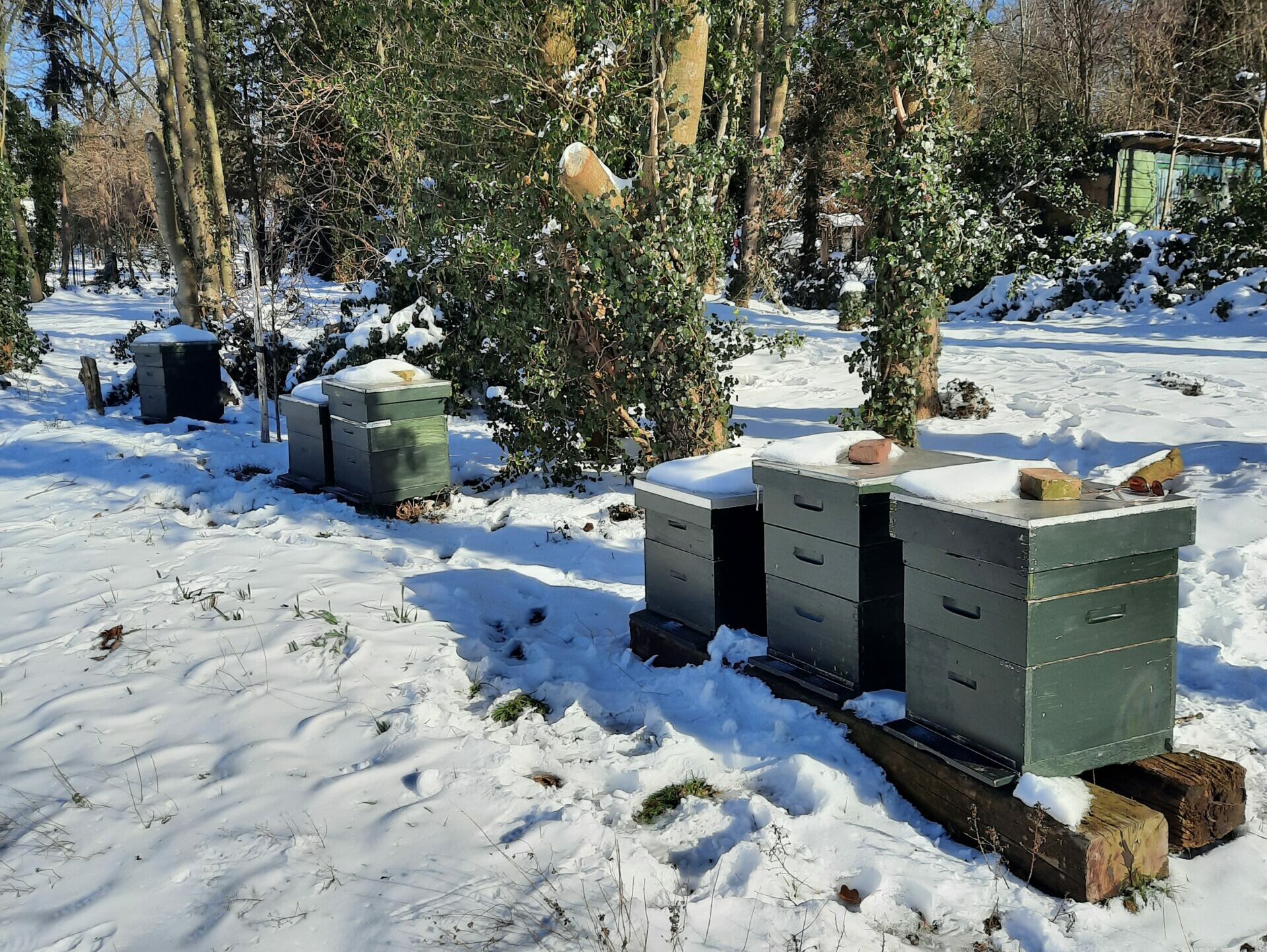There is a growing group of beekeepers who advocate keeping bees on small cells. An argument often used is that bees build smaller cells in natural conditions and that a conscious switch to a larger cell size was made at the beginning of the 20th century, with the Belgian professor Baudoux as its best-known advocate. However, an article by Francis Saucy from 2014 paints a completely different picture. He shows that an error was made in the interpretation of data from authors from the 17th, 18th and 19th centuries and that there is no question of larger cells than before.
According to Dee Lusby, a beekeeper from Arizona and one of the leading proponents of the use of small cells, worker cell density was historically measured using the ‘rhombus method’, which was replaced in the early 20th century by the ‘square method’, which she says was used by, among others, Professor Baudoux of Belgium (Lusby 1997a).
First some math: the square and the rhombus both have sides of equal length, but in a square the four angles are all 90o. In a rhombus we see angles of two 2 different sizes (which together are 180o). In the honeycomb these angles are respectively 60o and 120o. It is important to remember that for the same length of sides the areas of the square and the rhombus are different!
According to Lusby, the two methods lead to different numbers of cells per dm2 (see figure 1). When the newer ‘square method’ was introduced, she found major differences with earlier data: ‘modern’ cell densities corresponded to larger cell sizes. For example, a cell density of 830 cells/dm2 now corresponds to a cell size of 5.3 mm, while in the past the same cell density supposedly corresponded to a cell size of 4.9 mm. In other words, a cell size of 5.3 mm corresponds to a cell density of 830 calculated according to the square method, but only to 711 cells calculated according to the rhombus method.

The difference between the two calculation methods (as used by Lusby) is about 13.4%, which corresponds to a difference of about 0.4 mm in cell size. This is about the reduction in size that the proponents would like to make. But all the ancient authors arrived at these lower numbers, and it is hard to imagine that all the great minds of the Enlightenment and in the centuries that followed would have made the same calculation error.
To calculate the total number of cells in a rhombus, the number of rows of cells is multiplied by the number of cells per row. This is the case for a square, but for a rhombus, a transformation must be applied. For an angle of 60o, this factor is 0.866. So with a base of 1 dm, you get a surface of 0.866 dm2. In other words: the total number of cells on a rhombus with a base of 1 dm must still be divided by this factor to get the correct number of cells per dm2.
Lusby assessed the historical data assuming that a 1 by 1 dm rhombus has an area of 1 dm2. But this was a mistake: the correct figure is 0.866 dm2. And so she arrived at a cell density of 800 cells/dm2, much less than the 920 cells/dm2 calculated using the square method. Because the calculation should be: 800 cells/0.866 dm2 and that corresponds to 924 cells/dm2. This number corresponds well to 920 cells, calculated using the square method.
This calculation error was made by Dee Lusby with data from historical data from the 18th and 19th centuries. For example, Swammerdam and Réaumur published cell sizes of 5.15 mm and 5.31-5.36 mm respectively. Incidentally, they only published cell sizes and not the calculation method. Lusby mistakenly assumed that they would have used the rhombus method. By applying that calculation method, she interpreted these numbers as 4.7 and 4.9 mm respectively. Without the calculation error, old data correspond well with the ‘modern’ cell size.
Finally, we need to correct something: poor Baudoux is always dismissed by the small-cell people as the main culprit in the ‘fatal error’, and that his aim was to get bigger bees through larger cells, in order to be able to harvest more honey. Completely wrongly: he did not introduce the new square method and therefore never hid the discrepancy with the rhombus method. His estimates of cell sizes are completely in line with what authors have indicated in the past.
References:
Lusby, D.A., 1997a. Square decimetre conversion chart. http://english.resistantbees.es/?p=1015.
Lusby, D.A., 1997b. More on small cell foundation for mite control. American Bee Journal, 137(6): 411-412.
Saucy, F., 2014. On the natural cell size of European honey bees: a “fatal error” or distortion of historical data? Journal of Apicultural Research 53(3):327-336. DOI: 10.3896/IBRA.1.53.3.01.
